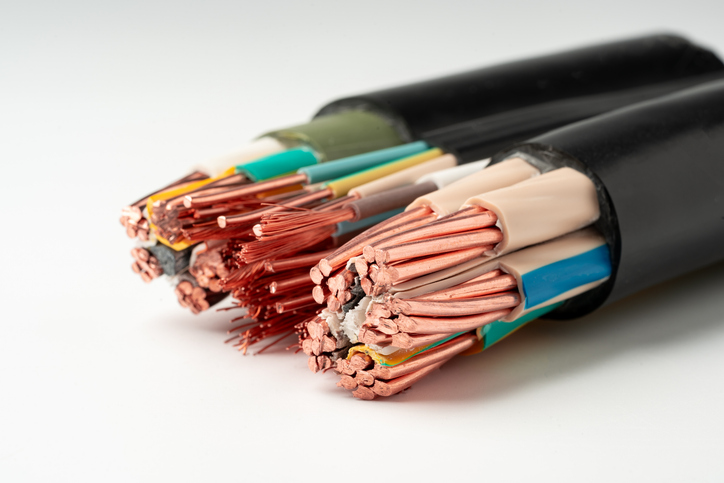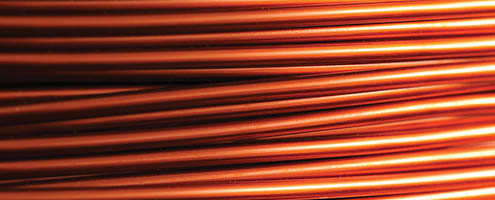SJOOW vs. SOOW Cable
If you’re looking for multiconductor cords, chances are you’re trying to decide between SJOOW vs. SOOW cords. Both common conductor cables are used in electrical applications, are durable, and ideal for many projects.
However, there are several differences between SJOOW and SOOW cables. Today, we’ll break down those key differentiators so you can choose the best flexible cord for your situation.
 What is SJOOW cable?
What is SJOOW cable?
So, what is SJOOW cable? SJOOW is a portable power cable that’s both flexible and long-lasting. When deciphering cable differences, it helps to know that the wire letters are acronyms.
For SJOOW cable, it means:
- S: Service Cord or Stranded Cord—not flexible.
- J: Junior voltage rating of 300 volts.
- O: Oil-resistant insulation.
- O: Oil-resistant jacket.
- W: Weather/Water-resistant.
Because of SJOOW’s construction, it’s suitable for a variety of applications in many different settings—industrial and residential. If you need a flexible cable that’s resistant to harsh environments, it’s an ideal solution. SJOOW cord can hold up to oil, water, and outdoor weather conditions (as well as indoor conditions that face moisture and other stressors).
Inside SJOOW cables are multiple conductors in the form of copper wires. The wires are surrounded by synthetic rubber insulation with a rubber jacket. This construction helps make SJOOW cables ideal for power equipment, tools, portable lights, and machinery subject to vibration, movement, and exposure to some types of chemicals.
SJOOW cables are often found in temporary power supplies, extension cords, and similar applications requiring safe and flexible electrical connections.
SJOOW Key Features
There are certain universal features that most SJOOW cables share, including:
- Voltage Rating: 300 volts (corresponding to the “J” or “Junior” status).
- Conductor Material: SJOOW conductors are usually stranded bare copper, making them flexible in tight configurations.
- Insulation: The insulation around the conductors and the outer jacket is made from thermosetting elastomers (like EPDM rubber), resistant to temperatures and chemicals.
- Oil, Water, and Weather Resistance: The “OO” in SJOOW represents the oil resistance of the insulation and outer jacket. The “W” signifies resistance to weather and water.
- Flexibility: A hallmark feature of SJOOW cable is flexibility. It’s easy to handle and can move and flex repeatedly.
- Temperature Range: SJOOW cable withstands temperatures as low as -40°C (-40°F) up to 90°C (194°F)—suitable for both cold and hot environments.
- Applications: SJOOW cable is commonly used in portable tools, temporary power supplies, lighting setups, sound equipment, and moving mechanical components, especially in harsh conditions.
- Safety Standard Compliance: SJOOW cable must meet UL and/or CSA compliance, ensuring it’s safe and up to standard for your applications.
- Size and Configuration: SJOOW is available in many sizes and conductor configurations. Select the best cable for your application based on the ampacity and number of conductors needed.
SJOOW Cable Applications
What are some of the standard applications for SJOOW cable? This versatile, durable cable is ideal for many uses thanks to its resistance to oil, water, and weather conditions. Some of the common uses for SJOOW cable are:
- Tools and Equipment: SJOOW cable is ideal for powering portable electric equipment and tools. It's instrumental in industrial settings and workshops when flexibility and stress resistance are crucial.
- Temporary Power Supplies: SJOOW cable is a go-to option for temporary and mobile power supply setups. It’s used for outdoor events, construction sites, and emergency power for small motors. Extension cords are one of the most popular SJOOW cable uses.
- Sound and Audio Equipment: SJOOW cable safely connects sound and audio equipment for concerts, outdoor events, and festivals.
- Lighting Installations: SJOOW cable is ideal for lighting installations—permanent or temporary. It’s especially suited for outdoor lighting, where the cable might be exposed to wet or harsh conditions.
- Agricultural Equipment: Farmers and agricultural workers rely on SJOOW cable to power smaller machinery and equipment, even when the cable may be exposed to moisture, dust, and chemicals.
- Industrial Machinery: For indoor machinery, SJOOW cable works well in industrial environments, where it can hold up to repeated movement in oily, wet, and abrasive conditions.
- Marine Applications: Water resistant SJOOW cable is often used on docks, marinas, and ships, where moisture and saltwater exposure are common.
- Heating and Cooling Equipment: The temperature resistance and durability of SJOOW cable are ideal for industrial HVAC equipment, especially in outdoor applications.
SJOOW cable is ideal for most basic industrial and mechanical applications. It's flexible, durable, and can withstand mechanical stress, environmental conditions, and chemical exposure.
What is SOOW Cable?
Similar to SJOOW cable, SOOW cable is durable and flexible. It's a heavier-duty power cable used in many industrial and commercial applications. Like SJOOW cable, SOOW cable is an acronym that stands for:
- S: Service Cord
- O: Oil-resistant insulation
- O: Oil-resistant outer jacket
- W: Weather/Water-resistant
So, what's the difference between SOOW vs. SJOOW portable cables? The J in SJOOW stands for "junior," indicating the 300-voltage rating. SOOW has a higher voltage rating, typically 600 volts. The higher rating makes SOOW cable ideal for applications requiring higher voltage capacity.
SOOW Key Features
So, what are some of the critical features of SOOW cable? They are similar to their SJOOW counterparts in many ways but have a few key differentiators:
- Voltage Rating: The cables' voltage rating is the most significant difference between SJOOW and SOOW cable. SJOOW cable has a 600-volt rating, which is better suited to heavy-duty applications requiring more power.
- Conductor Material: SOOW features bare copper conductors. These conductors are flexible, making the cord easy to handle, especially in applications where it needs to twist or bend.
- Insulation and Jacket Material: The insulation and outer jacket of SOOW cable are made from thermosetting elastomers, like EPDM rubber.
- Durability: SOOW cable holds up to abrasive conditions, oil, moisture, and other environmental factors like the weather.
- Flexibility: SOOW cable is highly flexible despite its durability.
- Temperature Resistance: SOOW cable is suitable for environments from -40°C (-40°F) up to 90°C (194°F).
Safety Standard Compliance: SOOW cable meets UL and CSA certifications and safety standards, ensuring reliability for a wide range of applications.
SOOW Cable Applications
Where would you find SOOW cable? What are some common uses? There are many different applications for SOOW cord. Like SJOOW cable, it's suitable for many environments and tough conditions.
- Industrial Equipment: SOOW cable powers heavy machinery in industrial settings. It's resistant to oils, chemicals, and abrasives in harsh conditions.
- Construction Sites: SOOW cable is ideal for construction tools and portable equipment on job sites requiring higher voltage and resistance to environmental hazards.
- Outdoor and Event Lighting: SOOW cable is often used in event lighting setups and permanent outdoor lighting applications, particularly in outdoor settings.
- Entertainment Systems: SOOW cable powers audio, video, and lighting equipment for outdoor concerts, festivals, and events.
- Marine and Dockside: SOOW cable withstands water and moisture, making it suitable for marine and boating applications. It’s used at many dockside facilities.
- Agriculture Applications: Farming and agricultural equipment may require SOOW cable to power heavy-duty machinery that’s exposed to weather, chemicals, and dust.
- HVAC Equipment: SOOW cable is often used for heating, ventilation, and air conditioning, especially for industrial and outdoor environments.
Like SJOOW cable, SOOW cable features flexibility and strength. It’s ideal for applications that require a durable, reliable power solution with a higher voltage capacity.
Choosing SJOOW vs. SOOW Cable
When deciding on SJOOW vs. SOOW cable, the main difference is voltage rating. The two types of cable have many similarities, including:
- Material composition: SJOOW and SOOW cables use stranded copper conductors with insulation and jackets made of thermosetting elastomers.
- Oil Resistant: The “OO” in SJOOW and SOOW indicate that the insulation and outer jackets are oil-resistant.
- Weather and Water Resistance: The “W” in SOOW and SJOOW reflects that the cables are weather and water-resistant for outdoor use.
- Flexible: SJOOW and SOOW cables are flexible and easy to handle, even in tight spaces.
- Safety Compliant: Both types of cable meet high safety standards, including certifications from UL and CSA.
Despite the many similarities between these two cable types, the main difference in voltage capacity dictates where each should be used.
SJOOW cables’ “Junior” status reflects a 300-volt rating. SOOW cables, on the other hand, are rated for 600 volts, making them more suited for heavy-duty power applications. Because of the higher voltage rating, SOOW cable is typically used in industrial applications that require more power for equipment. SJOOW cable is more often used in lighter commercial and residential applications.
- Choose SJOOW cable for light- to medium-duty power requirements. SJOOW cable is ideal for handheld tools, small machinery, and temporary lighting, where the voltage requirements don’t exceed 300 volts.
- Choose SOOW wire for higher-demand applications that need 600-volt capacity. SOOW is ideal for industrial machinery, powering large tools, and serving heavy-duty equipment. SOOW cable can withstand extreme conditions found in industrial environments and large-scale operations.
Voltage is the main differentiating factor between SOOW and SJOOW cables. The higher voltage impacts the size of the cable as well. SJOOW is most commonly found with 10-AWG through 18-AWG-sized conductors with a conductor count between 2/C and 4/C. SOOW goes up to larger AWG sizes and higher conductor counts. There are also shielded SOOW options.
Find SJOOW and SOOW cable at IEWC
At IEWC, we carry a wide selection of SJOOW and SOOW cables. We have the full range of AWG sizes and certifications for SJOOW and SOOW available to ship. As with all our products, SOOW and SJOOW cables are the highest quality materials, meeting all certification and safety requirements.
Need a unique construction? We work with a network of the world’s premier cable manufacturers who can provide custom construction for specialized applications. If you have any questions or would like a quote, please reach out to our team. We’re happy to help you find the right cable for any need.
Related Resources

Stranding Classes
Strand construction in wire and cable is crucial because it directly affects flexibility, durability, and electrical performance, impacting the overall reliability and efficiency of the cable in various applications.Learn More
Types of Strand Construction
Strand construction in wire and cable is crucial because it directly affects flexibility, durability, and electrical performance, impacting the overall reliability and efficiency of the cable in various applications.Learn More
Selecting a Conductor
Even in the design of a simple single insulated wire many factors must be considered, including physical properties of the conductorLearn More


